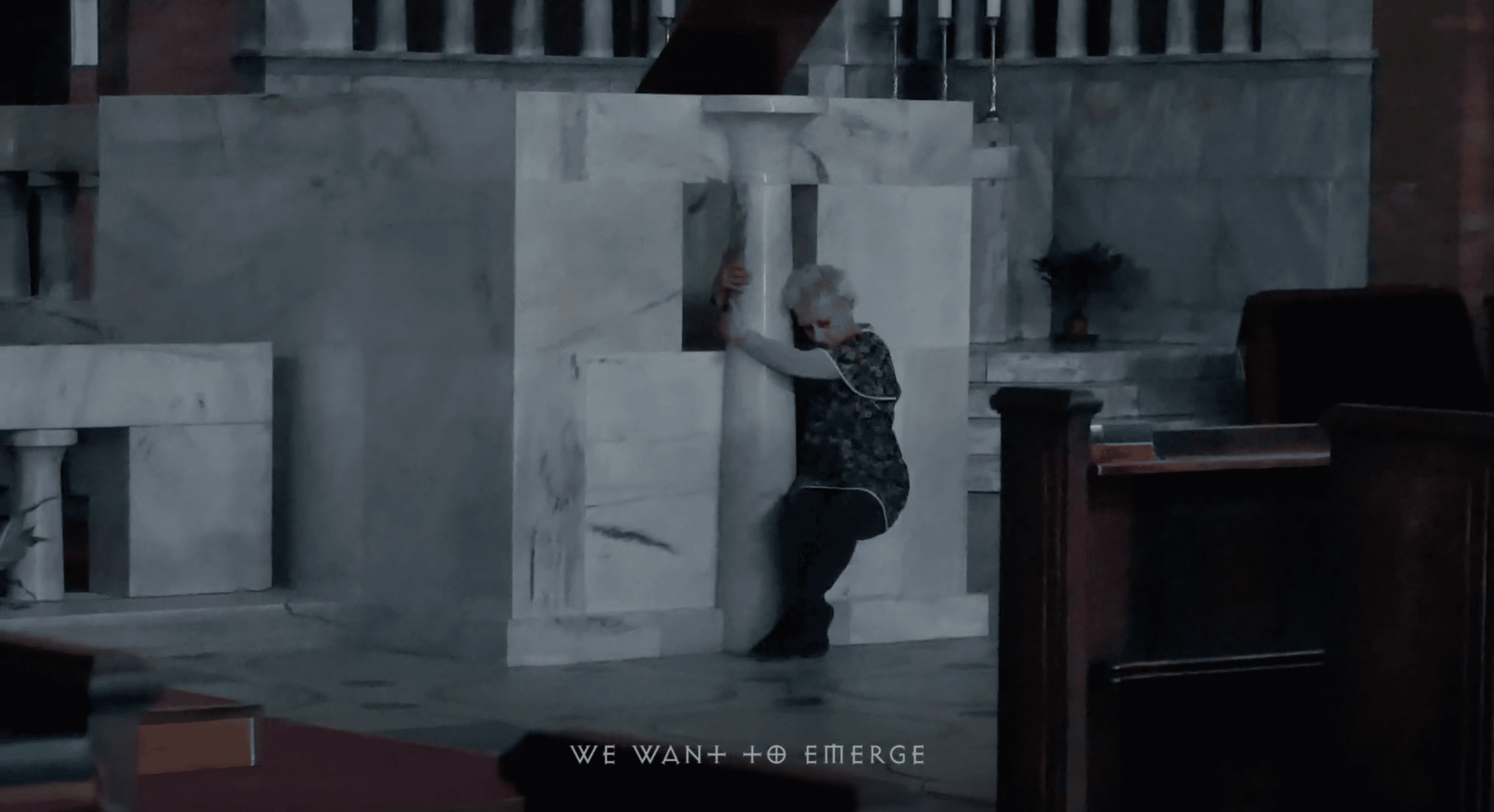
Video made in featuring with teoretist Anna Remešová
The very first discussions that took place before the creation of Milena's
song were motivated by the question of how modern Christian churches are able to reflect the transformation of the world and the modification of knowledge brought about by digital technology and social networks.

Over the years, when society had faith in the utopia of the democratic distribution of information over the internet and, consequently, profound disappointment, when people have developed neural networks which bear decisions that we are no longer able to follow, and when interpersonal communication and political activism began to be changed by corporate communication platforms, the existence and binding documents of the church haven't changed in any way. It seems that they are no longer able to respond to the problems of the present, whether these include deepening class differences, the marginalization of individuals (women, LGBTQ+, people without a European Union passport) or the impending climate catastrophe. Instead, Christian churches – especially in Central Europe and the Balkan countries – go in the
opposite direction, helping to strengthen nationalist ideas, reinforcing capitalism by their actions, suppressing the rights of women and non-binary people, demonstrating for traditional families and participating in the building of walls of division within Europe. All this is happening regardless of the level of secularism in individual
countries, on the contrary it turns out that even in an atheist country such as the Czech Republic, the Catholic Church – a when combined with political representation – can have considerable power.

Dichotomies of the world (I / Second, culture / nature, man / woman) are not
something of Christianity itself, but were formed later, from the early church fathers. This extended through institutionalization, the Church getting rich, the arrival of capitalism, the enlightenment, the modern age to today's perverted form, which has little to do with early Christian groups characterized by their cultural decentralization and non-hierarchical nature. Certain instruments of criticism are offered by
contemporary feminist protests, which are growing all over the world, demanding, for example, the ordination of women to priests, but also the tradition of liberation theology symbolized by Pope's Francis' anti-capitalist and ecological policies. Regarding the question of what power has a moving image today and whether it can contribute to the emancipation of women,not only in the environment of the Catholic Church, we find the origins of the first versions of the screenplay for the video of Milena's Song.

The video of Milena's song works within the theoretical background of
contemporary feminist thinking, namely with the legacy of cyberfeminism, which was formulated in the early 1990s by British feminist and cyberculture theorist Sadie Plant. Cyberfeminism grants emancipatory power to modern technology, but only as long as all people can access it, regardless of their class status, religious beliefs, cultural identifications, sexual orientation and/or gender. Cyberfeminists reject the classical dichotomies between nature and technology, natural and artificial, which is also referred to by the gradually decaying form of video. The position of women and LGBTQ+ minorities in the Roman Catholic Church and their exclusion from decision-making processes thus becomes a more general question, seeking the deep and spiritual causes of the current social crisis based on the consolidation of inequalities between human and nonhuman actors.

Another essential motive of the video is communication, which takes place
between the main protagonist and architecture, which does not occur at the level of verbal conversation, but is given by the relationship between their "technological" interiors. Just as wires, bricks and distribution boards fill the walls of a building, women's bodies are similarly structured. Her body is formed by the order and symmetry of front-planned architecture. According to the theory of the cyberfeminist group VNS Matrix, for example, the female genital organ can be described as technology because its functioning and perception are influenced by external factors, so it is designed and used as a tool. Thus, cyberfeminism is based on the experience of a woman and her body, not essentializing it, but working with its possible transformation in relation to social and political contexts.
Text by Anna Remešová